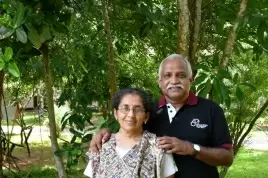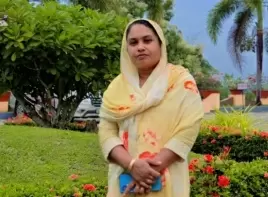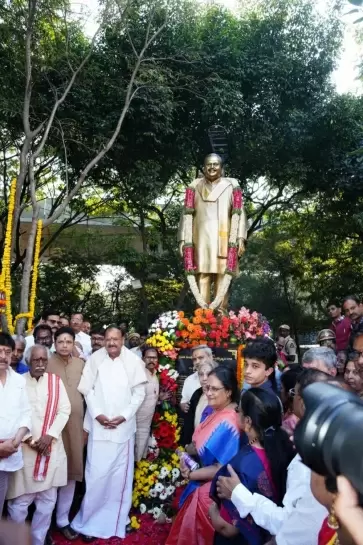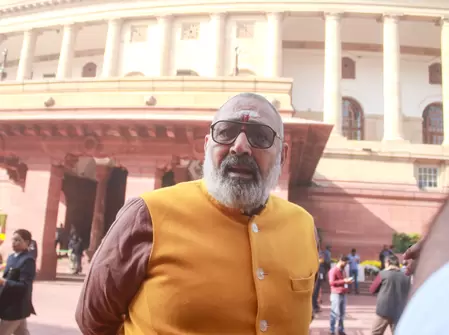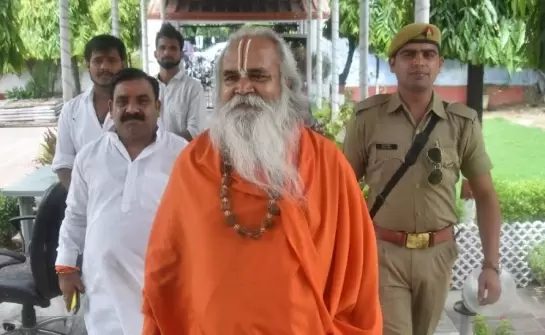A subterranean tourist spot speaks of a history of courage and commitment
29-September-2014
Vol 5 | Issue 39
Their subterranean depths protected Vietnamese guerrillas from intensive American bombing and ground attacks as well as hindrances of nature.
The over 200-km-long Cu Chi Tunnels allowed the Viet Cong to gather within striking distance of then enemy capital Saigon and served as headquarters for the Tet Offensive in 1968, the turning point of the Vietnam War.
Far from being just a rough burrow or a rudely-dug underground lair, the multi-layer, well-concealed and well-ventilated tunnels, 70 km northwest of Ho Chi Minh City, not only served to house the fighters but also had kitchens, hospitals, water wells, command centres, and meeting halls - and fighting emplacements and fiendishly-devised booby traps to deter any enemy who got close.
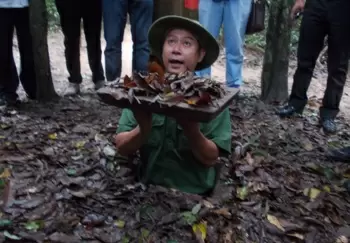 |
|
A guide demonstrates how Viet Cong fighters got into fighting positions from the tunnel (Photos: IANS)
|
The stupendous engineering achievement, near the Saigon river, owed its genesis to the local peasants' ingenuity and was dug out in the hard clay with basic tools, said guide Nguyen Hai Dang, who took the group of Indian journalists, accompanying President Pranab Mukherjee on his state visit, around the complex, now maintained as a war memorial and is a popular tourist destination.
The President also later visited the tunnels and paid a tribute to the "tenacity and courage" of the Viet Cong.
Dang, who has also shown Vice President Hamid Ansari around during his January 2013 visit as well as Argentine President Cristina Fernandez de Kirchener, said residents of the villages and the town around chipped in to help build this base, which survived at least two major attacks - the joint US-Australian Operation Crimp in January 1966, and two division-strong Operation Cedar Falls in January 1967.
Saving the Viet Cong's strength, it thus helped prolong the war - whose increasing costs and casualties for the US forced their withdrawal in 1972, three years before South Vietnam's final defeat in 1975.
The scale of the US attacks is mind-numbing - at the very entrance, there are piles of the cluster bombs, delayed-acted bombs and other munitions dropped by B-52s, as well as artillery and mortar shells that made a forest into a bleak, lunar terrain.
But with afforestation and the Vietnamese soil's remarkable fertility, specially-maintained craters in the forests are the only remaining scars of an ugly war, where the US used defoliants, napalm and the infamous "Agent Orange". Dang however noted it is still a "young forest".
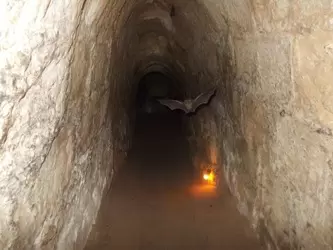 |
|
The tunnels are also abode for bats
|
The entrances to the tunnels are well-camouflaged, in many cases, under a cover of damp fallen leaves while the air vents were cut out into stones and are scarcely discernible.
On how entrances were concealed, especially when the enemy used tracker dogs, the guide asked the group to weigh in with suggestions. He dismissed use of chili powder, or pepper as this would make the dogs sneeze and arouse suspicion. The correct answer? Pieces of the enemy's uniforms, which would be familiar smells for the canines.
Showing the bamboo stake-bearing booby traps, he said they showed how easily weapons could be prepared.
"You need material and time to make metal stakes, but take a bamboo and slice it... you have a weapon. Slice it again, you have another weapon," he said. On the use of bamboo, and the ground level position of the firing slits, he said they were for a purpose. "The people hated the Americans, but they didn't want to kill them. Hence the gun positions where you could hit the enemy in the legs. Why?" he asked us, but no one could hit on the correct answer.
His reasoning was in line with the ethos of the asymmetrical guerrilla warfare. "You kill one enemy, you just kill one. You injure one, and his buddies will evacuate him and thus leave the battlefield themselves, bringing down their number."
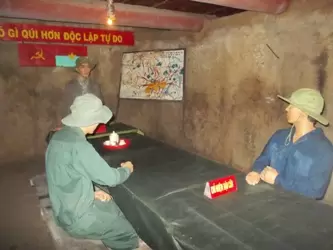 |
|
Reconstructed view of a Viet Cong military headquarters in the tunnel complex
|
Some tunnels have been reinforced and have low-power lights installed to allow interested visitors traverse them, though those suffering from claustrophobia, or asthma, blood pressure and so on are not advised to do so. The tunnels also are abode to bats, as this correspondent discovered, though these are the inoffensive fruit bats.
Asked if the guerrillas encountered snakes, Dang quipped: "It would be very lucky for them," in a reference to the reptiles being an accepted part of the local cuisine. However, the underground living and pests did have a detrimental effect on health of guerrillas, many of whom suffered from malaria and intestinal worms.
Sharing another experience of the guerrillas' life, you can also eat their same, simple fare like rice, or boiled tapioca/cassava, with a mixture of salt, cane sugar and peanuts, along with refreshing coconut milk.
Kept spic and span, the site also has replicas of Viet Cong fighters and plaques while there are several souvenir shops. - IANS




